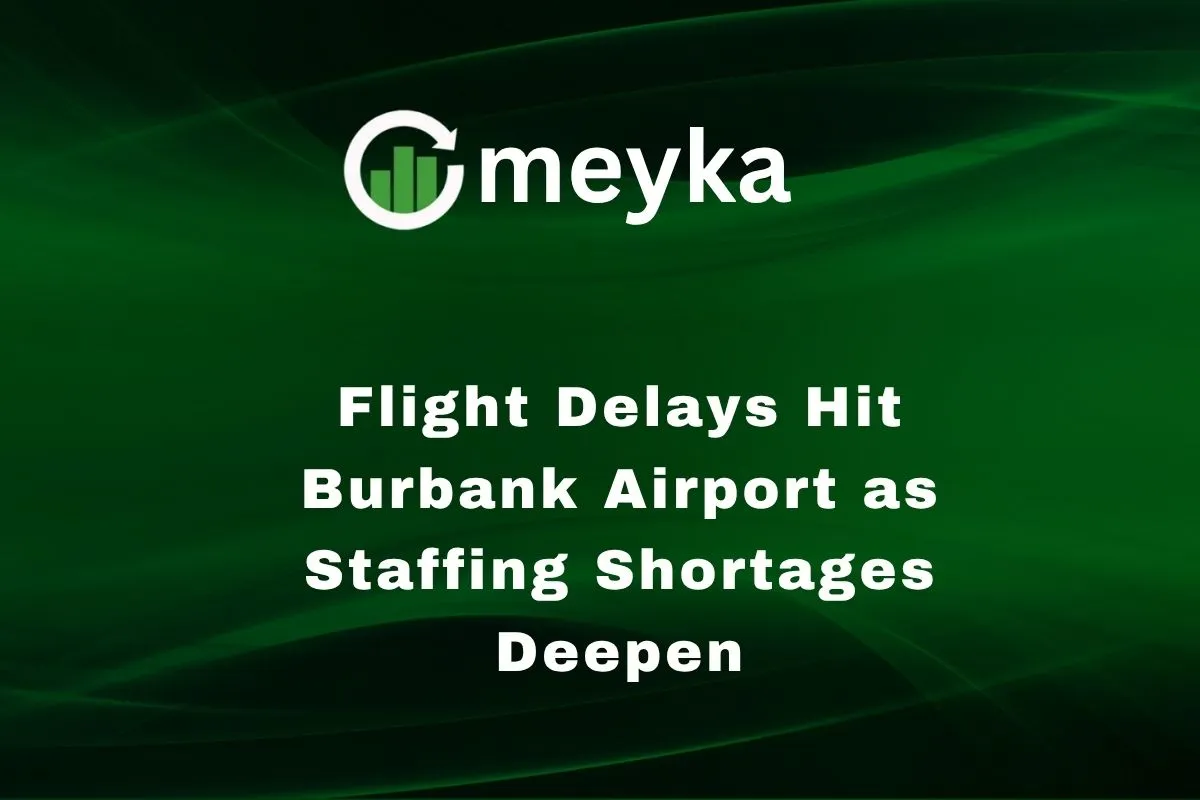Flight Delays Hit Burbank Airport as Staffing Shortages Deepen
Flight delays at Burbank Airport have surged lately. Many travelers are stuck in long wait times or see their flights canceled. We now know these delays are not random. They stem from severe staffing shortages across the aviation system, especially in air traffic control and ground operations. We will study how bad the situation is at Burbank, what’s causing it, how travelers and airlines are suffering, where this fits in national trends, and what steps are being taken to fix things.
Current Situation at Burbank Airport
Hollywood Burbank Airport (also called Burbank Airport in your keyword) serves the northern Greater Los Angeles area. Recently, for a stretch from 4:15 p.m. to 10:00 p.m., the airport’s air traffic control tower was unmanned. Controllers left due to increased sick calls amid a government shutdown.
During that period, airplanes could not receive direct local tower control. Instead, a remote facility called Southern California TRACON (based in San Diego) took over guiding arrivals and departures. As a result, outgoing flights saw average delays of about 2 hours and 31 minutes. Some cancellations also occurred: by 6:30 p.m., there had been 7 arrival cancellations and 5 departure cancellations at Burbank.
At one point, the FAA’s dashboard showed ground delays averaging 151 minutes (roughly 2 hours 31 minutes). One local report said the airport had a line of about seven planes waiting for takeoff. Officials had planned staffing triggers across several U.S. airports, including Denver, Phoenix, and Detroit, expecting more delays.
In short, Burbank’s operations were badly disrupted. The control tower was empty, flights backed up, and delays spread widely.
Causes Behind the Staffing Shortages
To understand why this is happening, we must look at deeper causes:
Government Shutdown & Pay Issues
Because of the ongoing U.S. government shutdown, many FAA employees, including air traffic controllers, are working without pay. The stress is rising. Some take sick leave or can’t continue working under unpaid conditions.
Pre-existing Shortage of Controllers
Even before the shutdown, the FAA was short of controllers. Some reports say an approximate deficit of 3,000 controllers. The system was already under strain.
Increased Sick Calls & Burnout
Controllers under unpaid pressure are calling in sick more often. Burnout after years of high-stress work plays a role, too.
Ground Crew and Support Staff Gaps
Delays don’t stem only from air traffic control. Ground services (baggage handlers, maintenance, ramp workers) also face staffing gaps in many airports. While specific Burbank numbers aren’t reported yet, the national trend is clear.
Rising Travel Demand Post-Pandemic
Flight demand rebounded strongly after the pandemic, leaving the infrastructure under stress. Many airports and airlines are still trying to catch up on hiring and training.
So we see a perfect storm: underpaid, overworked controllers; historic staffing gaps; and added load from returning travel demand.
Broader Impact on Travelers and Airlines
These delays create real problems for passengers and for airlines alike.
- Missed Connections & Schedules Disrupted
Travelers with connecting flights often miss them. Plans that involved meetings, events, or other flights get ruined. - Extra Costs
People may have to book hotels, stay overnight at a connecting city, or pay for meals while they wait. - Stress and Frustration
Waiting, rebooking, and uncertainty weigh heavily on travelers. - Airline Responses
Airlines may delay or cancel flights, reassign crews, or reduce schedules. They might offer compensation or alternate flights. - Reputational Damage
Customers may lose trust. Airports and airlines suffering repeated disruptions can see a drop in ratings and loyalty.
The pain is felt by individuals, but also by the industry’s efficiency and brand value.
Comparison with National Trends
Burbank’s crisis is not unique. It mirrors what’s happening across the U.S.
- The FAA reports that staffing pressures and delays are affecting many airports, including Newark, Denver, Phoenix, and Las Vegas.
- On a single day, more than 4,000 flights nationwide were delayed.
- In some areas, staffing is cut by 50% due to sick calls and shutdown impacts.
- At Newark Airport, the FAA has extended flight limits through October 2026 to manage controller shortages and congestion.
So Burbank’s issues are part of a broader pattern: the U.S. aviation system is struggling under old and new pressures alike.
Measures Being Taken to Address the Crisis
Even amid this turbulence, steps are underway to reduce delays and restore service.
Remote Control & Backup Systems
At Burbank, the role of local tower controllers was handed off to remote controllers at Southern California TRACON. This ensures minimal traffic flow, albeit at a slower capacity.
Delaying Flight Flow (Ground Delays)
The FAA is limiting when and how many planes can depart or land to manage safety. This method, called a “ground stop” or flow control, is used to slow operations so the system doesn’t collapse.
Hiring and Training
Some efforts are shifting to accelerate the recruitment of new controllers. However, training is intensive and takes time.
Incentive Programs
Agencies may introduce retention or bonus incentives for controllers in high-stress zones.
Flexible Scheduling & Staffing Plans
Airports may rearrange shift patterns, bring in backup staff, or reduce flights temporarily during peak stress.
Legislative and Budgetary Support
Ultimately, ending the shutdown and securing funding for the FAA and air travel infrastructure is key. Until then, operations remain fragile.
These are not instant fixes. But they signal determination to stabilize the system in the near term.
Conclusion
Delays at Burbank Airport show how fragile parts of the aviation system have become. The recent period when the control tower was unmanned, flights were delayed, and cancellations rose underscores the depth of the staffing crisis. We saw the causes, unpaid controllers, chronic shortages, burnout, and rising travel demand. We also saw how travelers suffer and how Burbank’s case echoes nationwide trends.
What gives hope is that steps are being taken. Remote backup control, tighter flight flow, and renewed hiring efforts are in motion. But fixing this fully will require time, political will, and solid investment. Until then, any traveler through Burbank should check their flight status, expect delays, and stay patient.
Disclaimer:
This content is for informational purposes only and is not financial advice. Always conduct your research.






